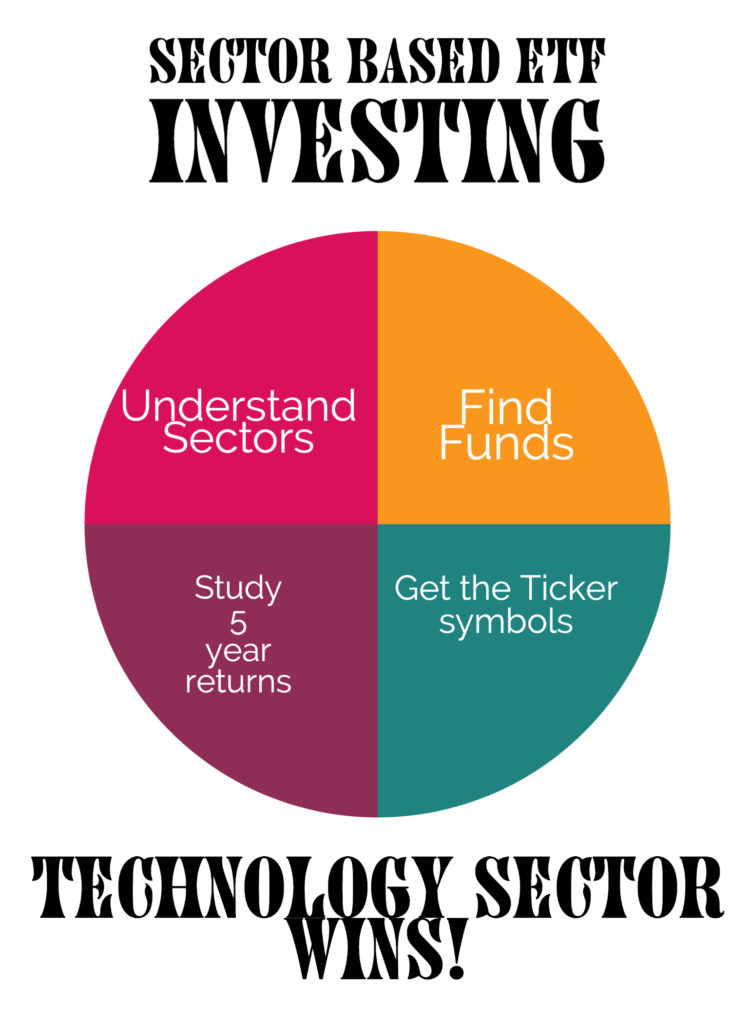

What is an Exchange Traded Fund (ETF)?
An exchange traded fund (ETF) is a basket of securities that trade on an exchange just like stocks do. They track the performance of an index that they are mapped to. If the companies in the index perform well, the Net Asset Value (NAV) of the ETF goes up, otherwise it goes down. The key difference with a Mutual fund is that ETFs could be traded during the day as well just like stocks unlike Mutual funds which cannot be traded on the market. More information about the differences could be found in my article Active versus passive investing.
An institutional investor purchases a basket of stocks in an index and puts them in a fund. That fund is packaged as an ETF and traded on an exchange. ETFs can be purchased and sold in real time at the prices that reflect the index performance. With having zero commission trading, there are no costs with purchasing and selling ETFs. Since these are not actively managed, they have less expense ratio compared to Mutual funds.
What are the Sectors?
The Global Industry Classification Standard (GICS) was developed in 1999 to provide an approach to defining industries and then classifying the securities (shares etc.) by the industry. The GICS has 11 Sector classifications:
- Communication Services
- Consumer Discretionary
- Consumer Staples
- Energy
- Financials
- Health Care
- Industrials
- Information Technology
- Materials
- Utilities
- Real Estate
Each of these sectors are further classified into industry groups, industries and sub-industries.
What are Sector ETFs?
A Sector ETF is an ETF that tracks the stocks of a particular sector.
What are the advantages and disadvantages of Sector-based investing?
The advantages of sector-based investing are that you achieve broad diversification to a portfolio in a particular sector without betting on individual companies. If you have a reason to be bullish on a particular sector, you have the upside without stock picking.
The disadvantage is that if you happen to be on the wrong side of a bet, you have a significant downside risk. Someone who invested in technology stocks in the current bull market had a great run whereas someone who bet on energy must have seen huge red ink on their portfolio.
Sector investing could be used to hedge a portfolio. Rising interest rates for example may have a negative impact on the Financials sector but does not affect the Information Technology sector. Trade wars could impact the Industrials sector but does not affect the Utilities sector. Building a portfolio with different sector ETFs could be a hedge against any adverse market events.
How do I purchase these sector-based ETFs?
Vanguard, State Street, Merrill Lynch and Fidelity provide sector-based ETFs.
What are the ticker symbols that I can look up and start investing with?
| Sector | Fidelity | Vanguard | State Street |
| Communication Services | FCOM | VOX | XLC |
| Consumer Discretionary | FDIS | VCR | XLY |
| Consumer Staples | FSTA | VDC | XLP |
| Energy | FENY | VDE | XLE |
| Financials | FNCL | VFH | XLF |
| Health Care | FHCL | VHT | XLV |
| Industrials | FIDU | VIS | XLI |
| Information Technology | FTEC | VGT | XLK |
| Materials | FMAT | VAW | XLB |
| Utilities | FUTY | VPU | XLU |
| Real Estate | FREL | VNQ | XLRE |
What would be my return if I had invested $5000 in these sector ETFs 3 years ago?
You can see in the following table that the Information Technology sector is the clear winner where you could have doubled your money in 3 years!
| Sector | 3-year return | Ending Balance |
| Communication Services | 6.91% | $6,109.77 |
| Consumer Discretionary | 14.93% | $7,590.50 |
| Consumer Staples | 4.67% | $5,733.72 |
| Energy | -14.19% | $3,159.25 |
| Financials | -0.72% | $4,892.78 |
| Health Care | 11.09% | $6,854.80 |
| Industrials | 2.98% | $5,460.45 |
| Information Technology | 25.91% | $9,980.46 |
| Materials | 1.59% | $5,242.31 |
| Utilities | 5.93% | $5,943.29 |
| Real Estate | 3.14% | $5,485.94 |
